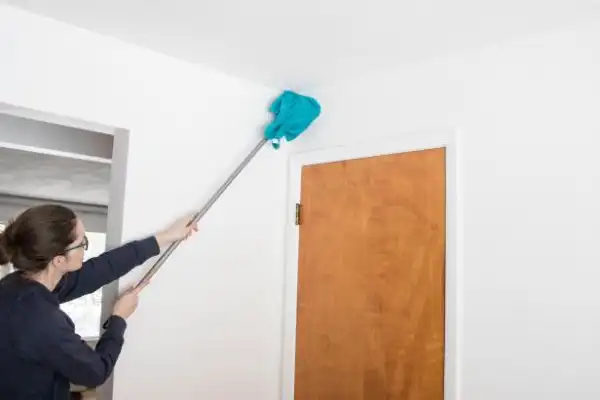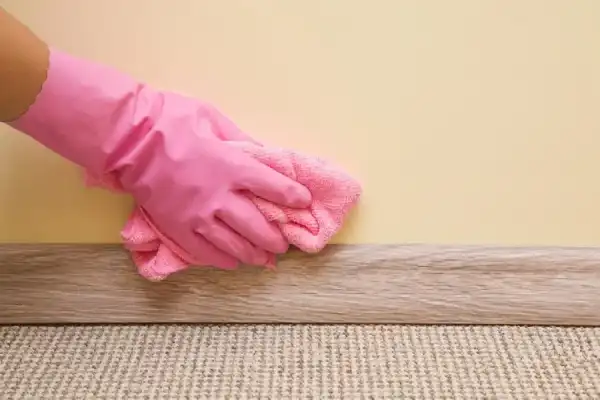Maintaining clean walls in your home is essential for creating a fresh and inviting living space. A clean wall not only enhances the overall appearance of your home but also contributes to a healthier indoor environment by reducing dust and allergens. In this 6-step guide, we will walk you through the process of cleaning your walls effectively and efficiently. From decluttering and dusting to spot-cleaning stains and shampooing, each step is designed to help you achieve spotless walls that are free from dirt and grime. By following these simple yet effective steps with care and attention, you can ensure that your walls remain clean and bright, transforming the look and feel of your living space.
Preparing Your Space for Cleaning
When it comes to cleaning your walls, proper preparation is key to achieving the best results. This involves a systematic approach that starts with decluttering the space and protecting your furniture and floors.
Removing Wall Decorations and Furniture
Before you begin cleaning your walls, it’s important to clear the area of any wall decorations and furniture. This not only allows for easier access to the walls but also prevents any items from getting in the way during the cleaning process. Take down any pictures, mirrors, or shelves and move furniture away from the walls to create a clean and spacious working environment.
Covering Furniture and Floors
To protect your furniture and floors from dust and dirt while cleaning the walls, it’s advisable to cover them with large-sized cloths or sheets. This will help prevent any debris or cleaning solution from damaging or staining your belongings. Additionally, covering surfaces will make the clean-up process much easier once you have finished cleaning the walls.
Also read this article : deep cleaning
Steps to Prepare Your Space for Cleaning:
- Clear the walls of decorations and furniture
- Move furniture away from the walls
- Cover furniture and floors with cloths or sheets
By following these steps to prepare your space for cleaning, you can ensure that your walls are ready for a thorough cleaning process. Taking the time to declutter and protect your belongings will not only make the cleaning process more efficient but also help maintain the cleanliness and condition of your home.
To clean the walls of your home, you should follow a 6-step guide that includes proper dusting techniques and stain removal methods. The first step in preparing the walls for cleaning is to remove decorative objects such as paintings, small objects and furniture. Dusting the walls using a broom, vacuum cleaner, or microfiber cloth will help you remove surface dust and dirt from the walls before proceeding with the cleaning process.

Choosing the right tools to capture dust
To ensure the complete removal of dust from the walls, it is necessary to choose the right tools to capture dust, such as a broom, vacuum cleaner or microfiber cloth. These tools will help you completely remove the dust from the walls and prepare them for the next cleaning steps.
Effective techniques for dust removal
Starting from the top and working your way down will help remove dust from the walls and prevent dust from settling again on the cleaned spots. Additionally, removing stains before shampooing the walls ensures that the cleaning process is more efficient. Using vinegar, baking soda, or commercial cleaning products can effectively remove stains before shampooing the walls. The key to achieving clean, bright walls in your home is patience and attention to detail.
When it comes to addressing wall stains, it is essential to start by identifying the types of stains present on the walls. Different stains require different cleaning methods and solutions. Common types of stains include water stains, grease stains, and dirt buildup.
Homemade Solutions for Stain Removal
Homemade solutions can be effective in removing various types of wall stains. For example, a mixture of vinegar and water can be used to tackle grease stains, while a paste of baking soda and water is ideal for removing dirt buildup. These natural solutions are not only cost-effective but also environmentally friendly.
- Use vinegar and water for grease stains
- Create a paste of baking soda and water for dirt buildup
Applying Cleaners for Tough Stains
For tough stains that cannot be removed with homemade solutions, it may be necessary to use commercial cleaning products. When applying cleaners, it is crucial to follow the manufacturer’s instructions carefully to ensure safe and effective use. Additionally, using a soft sponge or cloth to gently scrub the stained areas can help lift the stains without damaging the wall surface.
- Follow manufacturer’s instructions when using commercial cleaning products
- Gently scrub tough stains with a soft sponge or cloth
By following these steps and techniques, homeowners can effectively address wall stains and maintain clean and inviting living spaces. Remember to be patient and thorough in the cleaning process to achieve the best results.
Shampooing your walls is a crucial step in maintaining a clean and fresh home environment. To begin the process, it is important to create a gentle cleaning solution that is safe for your walls. By mixing mild dishwashing soap with warm water, you can create a soapy solution that effectively removes dirt and grime.
Also read this article : Carpet & Rug Cleaning services
Creating a Gentle Cleaning Solution
When creating the cleaning solution, make sure to use warm water to help dissolve the soap effectively. Using a soft sponge to apply the solution in small circular motions from top to bottom ensures thorough cleaning without damaging the walls. Additionally, wiping down the walls with a clean wet cloth after shampooing helps remove any remaining soap residue, leaving your walls looking bright and clean.
The Proper Way to Shampoo Walls
When shampooing your walls, it is important to start from the top and work your way down to ensure even cleaning. By cleaning in small circular motions, you can maintain consistency throughout the process. Avoid over-scrubbing and using harsh sponges to prevent any scrub marks on the walls. Finally, wiping the walls dry after cleaning is crucial to prevent water stains and ensure dust does not stick to the wet surface.

Ensuring Even Cleaning
To ensure even cleaning, it is essential to spot-clean any stains before shampooing. This can be done using vinegar, baking soda, or commercial cleaning products to effectively remove tough stains. By decluttering the area and dusting the walls beforehand, you can prevent making the walls messier during the cleaning process. By following these steps and using the proper techniques, you can achieve clean and well-maintained walls in your home.
One of the main challenges in cleaning walls is avoiding overtime and ensuring that the effects of the soap are completely removed. By following a systematic approach such as vacuuming, dusting, spot cleaning, shampooing, and wiping with a damp cloth, you can achieve a clean, shiny finish. It is essential to test cleaning products on inconspicuous areas before tackling visible stains to avoid damaging the wall surface. Additionally, maintaining patience during the cleaning process and avoiding shortcuts will ultimately lead to a cleaner and more durable result. By following these steps and taking care of the cleaning techniques used, you can ensure that your walls remain in excellent condition and contribute to your tidy home environment.
When it comes to ensuring walls are thoroughly dried, it is crucial to follow a few key steps to prevent water stains and dust accumulation. After cleaning the walls with a mild dishwashing soap and warm water solution, it is important to wipe them down with a clean wet cloth to remove any soapy residue. This step not only helps in achieving a bright, clean finish but also ensures that the walls are free from any leftover cleaning solution.
Also read this article : Marble / tails polish and cleaning
Preventing Water Stains and Dust Accumulation
After cleaning the walls, it is essential to wipe them dry to prevent water stains and ensure that dust does not get stuck to the wet surface. This attention to detail in the drying process is crucial for maintaining the cleanliness and appearance of the walls. Over-scrubbing and using a harsh sponge should be avoided to prevent any damage to the walls, which could lead to further issues in the future.
Additional Tips:
- Avoid using excessive water when cleaning the walls to prevent water stains.
- Use a clean, dry cloth to wipe down the walls after cleaning to ensure thorough drying.
- Allow the walls to air dry completely before adding any final touches or decorations.
Addressing Stains Before Shampooing
Before shampooing the walls, it is important to address any stains that may be present. Stains can be effectively removed using vinegar, baking soda, or commercial cleaning products, depending on the type of stain. Spot-cleaning these stains before shampooing ensures that they are properly addressed and do not become more difficult to remove during the cleaning process.
By taking the time to clean stains individually and thoroughly, the overall cleanliness and appearance of the walls can be significantly improved. This step is essential in the overall process of ensuring walls are thoroughly dried and preventing water stains and dust accumulation, contributing to a well-maintained and visually appealing living space.
conclusion
In conclusion, the 6-step guide to cleaning the walls of your home provides a comprehensive approach to achieving spotless and fresh walls. By properly preparing your space, dusting, addressing wall stains, shampooing, rinsing, and drying the walls, you can ensure a thorough cleaning process. It is important to follow each step carefully to avoid any extra work and ensure that your walls remain in excellent condition. By following these techniques and taking care to use proper cleaning methods, you can rest assured that your walls will contribute to a tidy and organized home environment. Remember to take the time to dry your walls completely to prevent water stains and dust accumulation, ensuring a pristine finish.

 WhatsApp
WhatsApp Email
Email